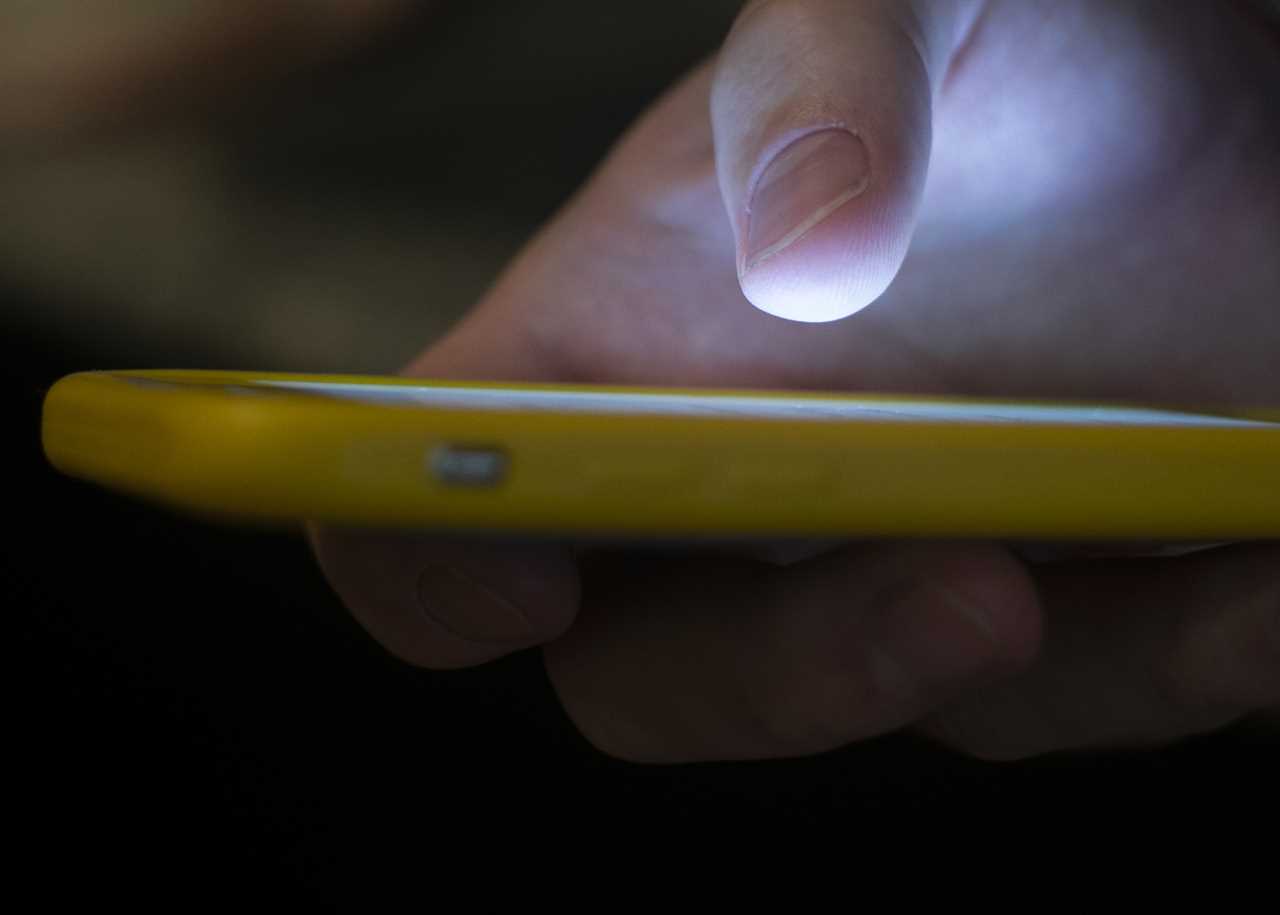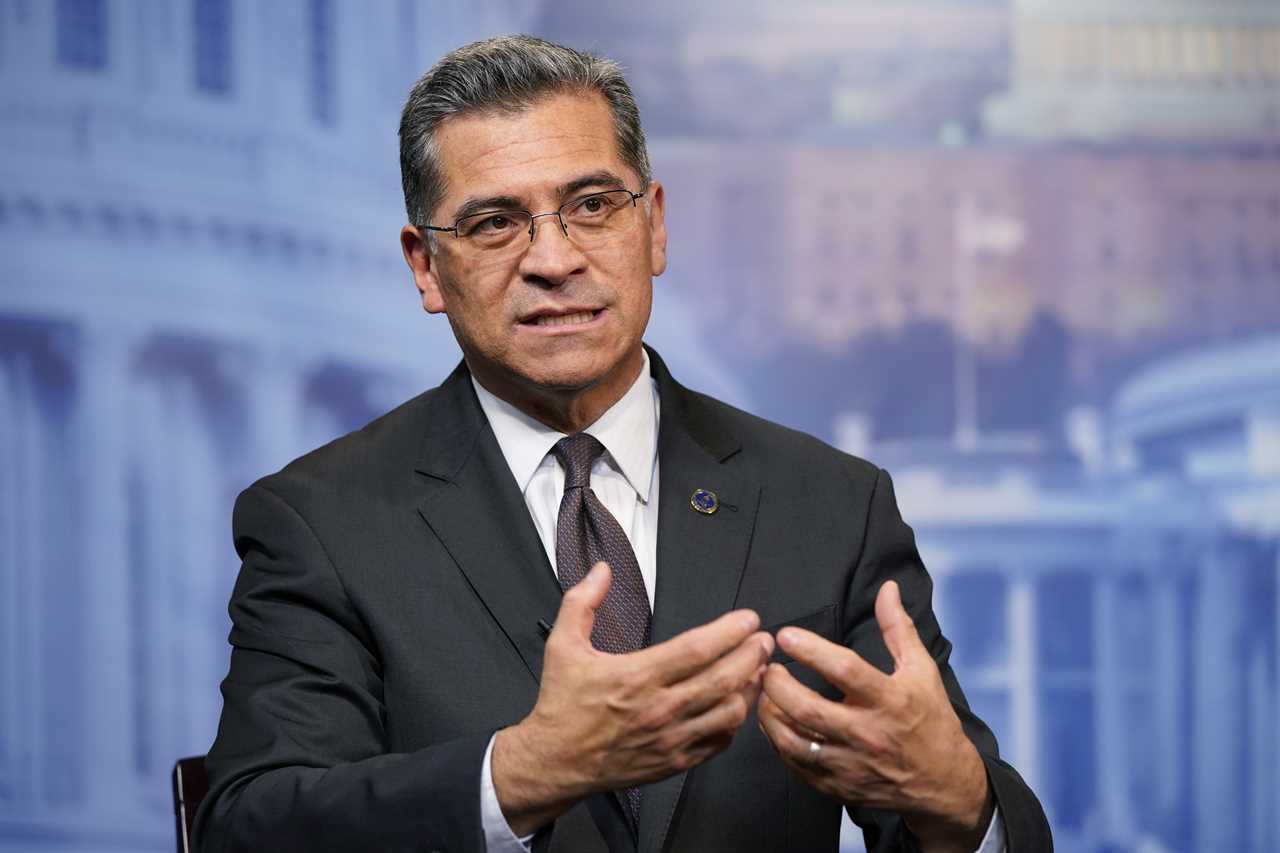
State health officials, unsure they have the money or staff to respond to an expected flood of calls to 988 — the new mental health hotline number — are tempering expectations just days ahead of its launch.
It’s a setback for the Biden administration, which had hoped the opening of the three-digit crisis line, billed as 911 for mental health care, would come with much fanfare. Instead senior officials find themselves downplaying Saturday’s launch as more of a "transition."
“911, when it was implemented, was an evolution,” said Christina Mullins, commissioner for the West Virginia Department of Health and Human Resources Bureau for Behavioral Health. “We're going to be in that similar evolution.”
Federal officials, including Health and Human Services Secretary Xavier Becerra, worry that most states are ill-prepared to meet the hotline’s long-term needs, a failing that could hamper states’ ability to quickly answer crisis calls with operators familiar with local resources. While the health agency in recent months has dispatched new funds to help states expand their crisis networks, federal officials say few states have kept their end of the bargain and implemented long-term funding.
The concerns come at a time when the Biden administration, Congress and public health experts say mental health challenges are too often unaddressed, and at least partly responsible for increases in drug overdose deaths, pre-teen suicides and gun violence among other maladies.
Becerra earlier this month lamented that most states — more than half of which were still sending a significant chunk of their crisis calls to an out-of-state backup call center as of May — still have not secured the needed funding and workforce for an expected surge in calls, due to increased media attention, once 988 goes live.
“988 isn't just a number, it's a message,” Becerra said during a conversation with reporters this month. “It's the signal to America that we want to consolidate that service, we want to strengthen that service and we want to make it consistent. We won't have the luxury of decades like 911 had to get on the ground and running.”

State health officials, call center directors and advocates in 11 states told POLITICO that while they feel prepared for the initial launch, it’s difficult to predict long-term needs. Even well-prepared states that have invested for years in behavioral health hotlines are struggling to convince their legislatures to levy new fees that would provide a predictable source of funding for staff and overhead, officials in those states said.
Every state currently operates at least one call center under a 10-digit phone number — 800-273-TALK — as part of the National Suicide Prevention Lifeline network, which was launched by the Substance Abuse and Mental Health Services Administration in 2005. On Saturday, the old 10-digit number will be replaced by the easier-to-remember 988.
But local centers’ capacity to answer calls, texts and chats varies significantly. Some states have had 24/7 crisis call centers, while others are only now expanding to round-the-clock operations. Some have more than a dozen call centers, while others have one. Some have long paid their staff while others are only now supplementing their volunteer teams with paid employees.
While some states answer virtually every contact, others route more than half their calls out-of-state to 15 backup centers funded through Lifeline.
Mississippi, which answers 89 percent of calls — one of the highest rates in the nation — has been expanding its mobile crisis response teams since they first launched in 2014 and has been working since 2017 to boost its in-state answer rate. The state’s two call centers serve as backups for each other, and any requests they can’t handle are diverted to national backup centers.
Nevada, by contrast, has just started to transition the staff at its one statewide call center from a largely volunteer workforce to a mix of paid and volunteer staff, adding almost 50 positions with state and federal dollars over the last few months. As of May, the state answered 65 percent of calls, one of the 10 worst rates in the country, though data provided by state health officials show the rate has been as high as 82 percent in previous months.
The legislature in May 2021 voted to allow the Board of Health to establish a cell phone fee to fund 988 to bring in more money to enhance the program but implementation has been stalled by bureaucratic delays and technical issues over how to transfer the money from telecommunications companies to the state.
“We went from being one of the few states to pass enabling legislation with — oh my God — a revenue stream, to that getting bogged down in regulatory and governmental issues that come up,” said Robin Reedy, executive director of NAMI Nevada, an affiliate of the National Alliance on Mental Illness. “It is frustrating, but not nearly as frustrating as the 20 and 30 years we’ve worked to get to this point.”
This spring, Becerra touted the coming of 988 as part of his national mental health tour, even pointing to Nevada as a state that could help lead the transformation.
“This is a lifeline. It will take over from the patchwork of suicide and mental health prevention lines that are available today,” Becerra said during a visit with Nevada Gov. Steve Sisolak during that tour in April. “Nevada is doing the work with the other 49 states and the territories to get us ready.”
But not all states have met expectations.
HHS has tried for several months to urge states with lower response rates and sparser funding to prepare for Saturday’s launch with dedicated revenue streams, recently sending letters to every governor telling them how their mental health hotlines’ rank.
But state health officials say whether they are prepared for the launch of 988 has to do with more than whether they have secured a permanent funding source for the program. In fact, three of the four states that have approved a telecommunications fee had among the worst answer rates in the nation in May.
Washington state, for instance, passed a bill last year establishing a 24 cent fee on cell phone lines that will increase to 40 cents in January. It is expected to generate $36.1 million this fiscal year, according to state projections. Colorado has put in place an 18 cent fee and both states are using that funding to hire additional staff in an effort to boost their in-state call answer rates of 63 percent and 51 percent, respectively.
Other states, meanwhile, say it’s been challenging persuading their legislatures to pass a fee — essentially an excise tax — to fund a program with an as-yet uncertain annual budget, since no one knows just how high the demand for services will be when 988 goes live.
“It is very difficult to ask your legislature for dollars that are a little bit unpredictable,” said Jodi Manz, the behavioral health project director for the National Academy for State Health Policy.
Even California, no foe of fees and taxes, has struggled to pass permanent funding for the 988 program, with legislation to create a telecommunications fee stalling last year and the state instead appropriating $28 million to get the program running.
Tara Gamboa-Eastman, senior advocate at the Steinberg Institute, a mental health care advocacy group that has been advocating for the passage of the 988 fee in California, said she believes the state’s 13 centers are prepared for the July 16 launch but that the program won’t work as it is envisioned in the long-term without a stable revenue stream.
“I think California has a huge opportunity to be a leader in 988,” she said. “But there’s a lot of work ahead.”
Over the last four months, Lifeline has answered 27,000 more calls, a 20 percent increase over previous months; 27,000 more chats, a 165 percent spike; and 3,000 more texts, a 93 percent increase, said Miriam Delphin-Rittmon, HHS assistant secretary for mental health and substance use. HHS officials are not certain what is behind the spike.
While callers will still be able to receive crisis care through backup centers, state health officials say in-state call centers are more familiar with the local services, including the availability of mobile response teams, psychiatric urgent care facilities and crisis stabilization beds. Plus, they say it can help callers to know they are talking to someone close to home.
“It's certainly comforting for callers if you know that your call is being answered, at least within your own region and, in our case, within your own state,” said Matthew Wintersteen, an associate professor at Thomas Jefferson University who has been working with Pennsylvania to boost its in-state answer rate. “If they’re not more local to you, within your own state, for example, it’s harder for them to connect to the available services that might be in those communities.”
Recognizing the value of local responders and easy access, Congress passed a law to fund the 988 program in late 2020, but the initiative did not see substantial money until this year. The $282 million allotted through the fiscal 2022 HHS budget and the American Rescue Plan, signed into law in March 2021, was 10 times more than the hotline’s $24 million budget last year. Congress tacked on another $150 million for states’ support in the bipartisan gun control legislation enacted in late June.
But those federal dollars are a short-term solution. Federal health officials expect states to fund 988 in the long term by levying permanent telecommunications fees.
“On the federal side, I think everyone has to agree that we've been a good partner,” Becerra told reporters this month. “We just need, now, our states, territories and tribal governments to be good partners. Because at the end of the day, 988 is not a federal program.”
State and federal officials are anticipating a surge in activity when 988 goes live, projecting 6 million calls, chats and texts to 988 in the first year, nearly double the volume Lifeline receives. The new hotline may even receive 12 million solicitations this year as people become more aware of the hotline, an HHS spokesperson said.
Arizona, like many other states, is not planning to advertise the new number because of the volume of calls it already receives. Andrew Erwin, chief operating officer of state crisis line Solari, says regional responders to the existing call line already field more calls in one month than some states do in a year.
Still, Erwin expects more calls and the state is using a $1.8 million SAMHSA grant to hire 14 new employees.
“Because of that, we're probably not going to see things that some states that just haven't really done this before [will see]. They're sort of flipping a switch and saying, general public, now dial three digits and you'll get access,” he said.
The expected surge has officials across the country insisting that July 16 is the beginning not the end of a transition.
“If you are willing to turn to someone in your moment of crisis, 988 will be there. 988 won't be a busy signal and 988 won't put you on hold. You will get help,” Becerra said. “That is the aspiration. And it doesn't happen overnight.”
----------------------------------------
By: Megan Messerly and Sarah Owermohle
Title: 988 set for quiet launch in light of state, federal concerns about crisis call spike
Sourced From: www.politico.com/news/2022/07/12/988-mental-health-line-launch-00045194
Published Date: Tue, 12 Jul 2022 03:30:00 EST






